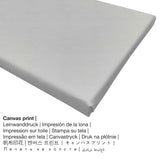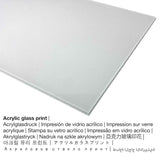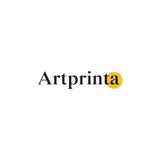Vincent van Gogh, 1882 - Bleaching Ground at Scheveningen - fine art print
Tax included. Shipping calculated at checkout.
Specification of the print product
This over 130 years old piece of art Bleaching Ground at Scheveningen was created by the post-impressionist artist Vincent van Gogh in 1882. The original measures the size - 31,8 x 54 cm. Watercolour was used by the painter as the medium of the work of art. Furthermore, the artpiece can be viewed in in the The J. Paul Getty Museum's art collection, which is part of the J. Paul Getty trust and is one of the world's largest arts organizations worldwide. It seeks to inspire curiosity about, and enjoyment and understanding of, the visual arts by collecting, conserving, exhibiting, and interpreting works of art of outstanding quality and historical importance.. With courtesy of The J. Paul Getty Museum (licensed - public domain).The creditline of the artwork is the following: . The alignment is in landscape format and has an image ratio of 16 : 9, meaning that the length is 78% longer than the width. Vincent van Gogh was a painter, botanical illustrator, printmaker, drawer, whose art style can be classified as Post-Impressionism. The Dutch painter lived for 37 years and was born in 1853 in Zundert, North Brabant, Netherlands and deceased in the year 1890.
Product materials our customers can choose from
The product dropdown menu gives you the possibility to select your favorite size and material. Therefore, we allow you to choose among the following options:
- Aluminium dibond print: These are metal prints on aluminium dibond material with a true effect of depth. The Aluminium Dibond Print is your ideal start to fine art replicas manufactured with aluminum. For your Print On Aluminum Dibond, we print the selected work of art on the aluminium surface. The white and bright parts of the work of art shine with a silky gloss, however without the glare.
- Acrylic glass print (with real glass coating): The print on acrylic glass, which is often named as a print on plexiglass, will convert your favorite original into wonderful décor. Your artwork is custom-made with state-of-the-art UV direct print machines. The great upside of an acrylic glass print is that contrasts and smaller details will be more identifiable because of the very fine gradation in the print.
- Canvas print: A printed canvas stretched on a wood frame. It makes the exclusive impression of three-dimensionality. Canvas Prints have the advantage of being low in weight, meaning that it is quite simple to hang your Canvas print without additional wall-mounts. A canvas print is suited for all types of walls.
- The poster print (canvas material): The poster print is a printed sheet of flat cotton canvas with a nice surface texture, which reminds the original version of the work of art. The poster print is suited for framing your art print in a custom frame. Please bear in mind, that depending on the absolute size of the poster print we add a white margin of something between 2-6 cm round about the painting in order to facilitate the framing with your custom frame.
Important legal note: We try the best we can in order to depict our products in as much detail as possible and to display them visually on the respective product detail pages. Nevertheless, the colors of the print materials and the print result may differ slightly from the image on your device's monitor. Depending on your settings of your screen and the quality of the surface, not all color pigments are printed as realistically as the digital version on this website. Since the art prints are processed and printed by hand, there might as well be slight differences in the exact position and the size of the motif.
About this item
| Product categorization: | art reproduction |
| Method of reproduction: | reproduction in digital format |
| Production technique: | UV direct printing (digital print) |
| Product Origin: | German production |
| Stock type: | on demand production |
| Product use: | art print gallery, wall décor |
| Alignment of the artwork: | landscape format |
| Image ratio: | length to width 16 : 9 |
| Side ratio implication: | the length is 78% longer than the width |
| Materials you can choose from: | canvas print, metal print (aluminium dibond), acrylic glass print (with real glass coating), poster print (canvas paper) |
| Canvas print (canvas on stretcher frame) size options: | 90x50cm - 35x20", 180x100cm - 71x39" |
| Acrylic glass print (with real glass coating) size options: | 90x50cm - 35x20", 180x100cm - 71x39" |
| Poster print (canvas paper) sizes: | 90x50cm - 35x20" |
| Dibond print (alumnium material) sizes: | 90x50cm - 35x20" |
| Picture frame: | not included |
Work of art information
| Painting name: | "Bleaching Ground at Scheveningen" |
| Categorization: | painting |
| Generic term: | modern art |
| Period: | 19th century |
| Created in the year: | 1882 |
| Approximate age of artwork: | around 130 years |
| Original medium: | watercolour |
| Original size: | 31,8 x 54 cm |
| Exhibited in: | The J. Paul Getty Museum |
| Museum location: | Los Angeles, California, United States of America |
| Website: | The J. Paul Getty Museum |
| Artwork license type: | public domain |
| Courtesy of: | The J. Paul Getty Museum |
Artist details table
| Name: | Vincent van Gogh |
| Alias names: | Fan-ku, Fangu, Fangu Wensheng, Fan-kao, j. van gogh, ビンセントゴッホ, 梵高, Gogh Vincent Willem van, Gogh Vincent-Willem van, van gogh, Vincent van Gogh, גוג וינסנט ואן, Gogh, גוך וינסנט ואן, v. van gogh, Fan'gao, van Gogh Vincent, Gogh Vincent van, Van-Gog Vint︠s︡ent, ゴッホ |
| Gender: | male |
| Nationality: | Dutch |
| Jobs of the artist: | painter, printmaker, botanical illustrator, drawer |
| Country: | the Netherlands |
| Classification of the artist: | modern artist |
| Styles of the artist: | Post-Impressionism |
| Lifetime: | 37 years |
| Born: | 1853 |
| City of birth: | Zundert, North Brabant, Netherlands |
| Died in the year: | 1890 |
| Deceased in (place): | Auvers-sur-Oise, Ile-de-France, France |
© Copyright - Artprinta.com (Artprinta)
General specifications from the museum's website (© - by The J. Paul Getty Museum - The J. Paul Getty Museum)
"I also did a bleaching ground at Scheveningen right on the spot, washed in at one sitting, almost without preparation, on a piece of very coarse Torchon [paper]," Vincent van Gogh wrote on 26 July 1882.
Displaying his early accomplishment after only six months of working in and around The Hague, the recto and verso of this drawing together offer a fascinating glimpse into van Gogh's working process. He probably began by drawing the Scheveningen woman on the verso. Possibly dissatisfied with its murky effect, he may also have cut down the sheet to its current dimensions. Recycling the high-quality Torchon paper, he turned the sheet over and painted this luminous scene in watercolors as he watched the women at work in the field.
With the whites blowing from the fence, van Gogh retained the freshness of the moment and created a sense of motion within an otherwise still landscape. Divergent and well-observed details combine into a single overall scheme, conveying a sense of open outdoor space. Masterfully handling a difficult medium, van Gogh revealed the luminosity of watercolor and hinted at the expressiveness and colorful palette of his art to come.














